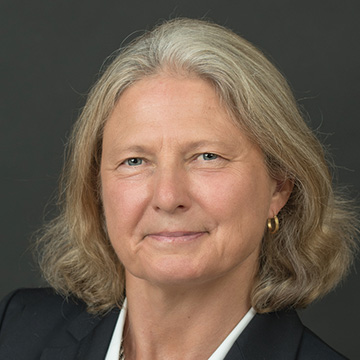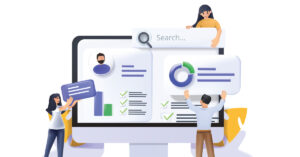Technology has been uniquely poised for more than 15 years to transform the time-consuming and paper-centric process of closing a mortgage, but it’s taken a major event — a global pandemic — that requires physical distancing to really get things rolling. The coronavirus-induced restrictions for personal contact have created demand for an electronic closing, or e-closing, rather than meeting in person.
Consequently, the lending mindset has shifted to move mortgages online, to find creative solutions for notarization and to eliminate paper, as borrowers don’t want to risk health or safety to purchase or refinance a home. Originators, lenders and title companies are faced with a major uphill battle to put all the pieces in place.
To date, there is not a one-stop-shop solution for an electronic mortgage — there’s a patchwork of providers that offer solutions for each of the necessary components.
This digital shift requires a unique combination of legislation, technology and acceptance by both mortgage professionals and borrowers. The legislation and the technology have been in place for some time, but acceptance has been slow — until now.
Challenging journey
An electronic mortgage requires change — not just a change to new technology but also a change in the way the process operates. Originators often begin with creating an attractive borrower application and approval system but stumble on how to fully digitize the closing process with a seamless consumer experience.
Common hurdles occur regardless of an institution’s size. These include overcoming the perception that it is less risky to use printed documents, integrating siloed systems and processes, deciphering diverse state and local regulations, and understanding investor and regulatory requirements. The following factors should be considered when implementing these projects.
First, understand that moving to a fully digital process is a journey. This shift can be challenging and have speed bumps and forks in the road. It is important to understand how digital a mortgage can be (or should be) for your organization. There are several factors that will influence just how electronic the process will be, such as a loan’s e-eligibility, including trading partner requirements; a local jurisdiction’s recording capabilities; e-notarization regulations; the readiness of settlement and title agents; and investor acceptance. A phased and hybrid approach often works well to incrementally reach the goal of a paperless closing. Some think the move is an all-or-nothing proposition, but it is not.
Not all documents in the loan file need to be electronic. Even though electronic signatures are legally enforceable, it is sometimes easier and less risky to use printed documents, especially with respect to notarization.
Acceptance of e-notarization is on a state-by-state basis. Some states have published rules for the process, while others have stated publicly that it is allowed but have not provided any guidance. Additionally, there are states that have remained silent on the issue as well as other states that require an e-notarization approval process.
The good news is that it is possible to conduct a hybrid closing with a mix of electronic and paper documents in which the majority of the loan file contains electronically signed documents, including an e-note, along with wet-ink signed documents for those requiring notarization. How electronic the process is should be a team decision, not just one made by an IT department.
Key questions
Two keys to a successful project are executive sponsorship and the creation of a working group of internal employees. This requires an effort that includes members from various areas (such as IT, operations, vendor management, information security, operations, compliance, audit, risk and legal). This team will need answers to questions such as:
- What technologies are already in place and what new systems are needed?
- How will different systems integrate within the enterprise to provide an electronic solution?
- What legal issues must be considered?
- Is e-notarization permitted and can these documents be recorded in public land records?
- Are there new or additional information security requirements?
- What are the considerations for servicing the loan during its life?
- What is required for pledging, selling and delivering the loan?
To answer these questions, a team has to understand how to comply with e-signature laws, state notarization statutes, industry standards and investor requirements.
Common understanding
For a mortgage team to be successful, education is essential for establishing a common framework and understanding about what is needed to go electronic. All members of the team should be educated on key topics.
Many resources exist for educational opportunities. The Mortgage Bankers Association and Mortgage Industry Standards Maintenance Organization (MISMO) offer recorded webinars on the digitization of the residential mortgage industry as well as frequently asked questions. There also are job aids and guides from Fannie Mae and Freddie Mac; videos, webinars and podcasts from the Federal Home Loans Banks; and live classes tailored for your institution by subject matter experts.
The electronic loan process is akin to a diesel train engine, which runs smoothly thanks to the perfect interaction between its components. The engine is made up of various systems — the injection system, turbochargers, exhaust gas recirculation system, engine electronics and so on. Similarly, each of the various technologies of the electronic loan process need to be integrated to make it run. This includes e-signatures, e-note document preparation, an e-closing platform, e-registry connectivity to the Mortgage Electronic Registration Systems, an e-vault and servicing procedures.
The good news is that origination processes for an e-closing are mostly the same except for document preparation. To date, there is not a one-stop-shop solution for an electronic mortgage — there’s a patchwork of providers that offer solutions for each of the necessary components. A readiness assessment can help a team review its current technologies and the need for any additional solutions.
An electronic road map builds upon the readiness assessment and outlines the capabilities of current vendors to provide recommendations for what is needed. The ultimate goals of the road map are to meet investor and secured-lender requirements for pledging collateral and sale on the secondary market; to recommend additional business processes and policies for an electronic mortgage; to enhance the consumer experience; and to shorten the time frames for faster pledging and sales.
The road map phase will typically include performing due diligence, issuing requests for proposals, selecting technology companies and performing outreach to all involved — including business partners such as title and settlement agents. This is the part of the project to determine how to meet regulatory, investor and secured-lender requirements.
Implementing the different parts of the electronic engine, as defined in the road map phase, is the final step in the journey. Typically, this phase includes obtaining necessary materials and approvals; reviewing license agreements; integrating loan origination systems and document preparation systems; and updating operational and system workflows, policies and procedures.
● ● ●
Change is hard and it may seem far easier to use paper as a settlement crutch than to move to an electronic process. Being determined is key for reaching any goal. The time has come to turn on the engine and start moving on the right track. ●
-
Rachael Sokolowski is president of Magnolia Technologies LLC. She is a recognized leader, technology evangelist, trusted adviser and author in the mortgage banking industry. Sokolowski is currently co-chair of the MISMO eMortgage Community of Practice and is certified by MISMO as a Mortgage Standards Professional (CMSP). In 2016, Sokolowski received the MISMO Chairman’s Award and was named by Mortgage Women Magazine as a technology leader and entrepreneur in the industry.
View all posts





